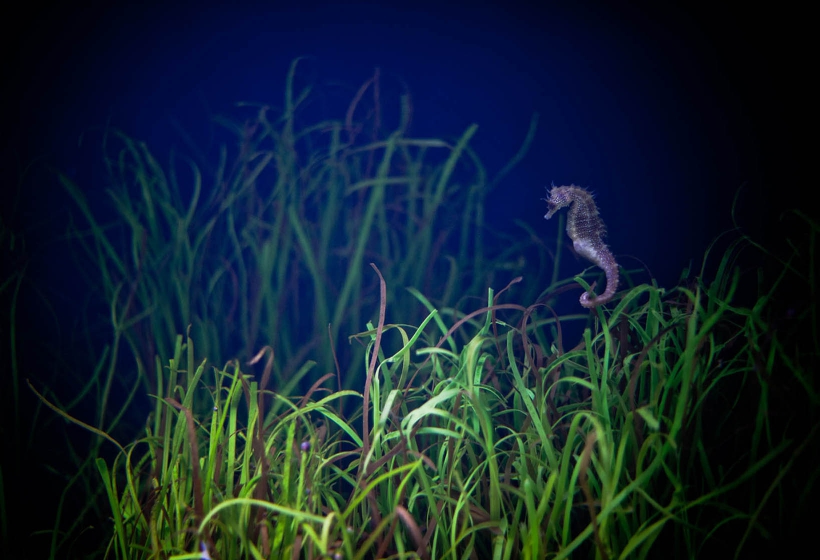Long-snouted seahorse

Biology
This seahorses can be distinguished from others that inhabit Portuguese waters, by their longer snout and thick skin fronds covering head and neck, which resemble branches. Measuring up to 25 centimetres, they are usually brownish, but can change colour very quickly for camouflage and during courtship. They inhabit shallow coastal waters, such as estuaries, preferring eel grass beds. Like other seahorses, they are poor swimmers, using the prehensile tail to grip onto eel grass and other structures. Their eyes are able to work independently on either side of their head, which is particularly useful for finding food. They hunt for food by sight, sucking their prey, small crustaceans, up through their tube-like snouts.
Conservation
As it is a coastal species it is extremely susceptible to habitat degradation and disturbance through direct human activities such as pollution and the effect of fishing gear like trawls and dredges (that accidentally capture these animals). In addition, seahorses are often caught to be sold as souvenirs. These threats have led to a large decrease in the Portuguese population of long snouted seahorses.
Curiosities
Seahorses pair for life. During the breeding season they meet first thing in the morning to reinforce their pair bonding with an elaborate courtship “dance”, in which the male circles around the female, forming a spiral in the water column. The female transfers her eggs to the male, which he fertilizes in his pouch. The male incubates the eggs for five weeks, and dozens of young juveniles are expelled through repeated contraction.
